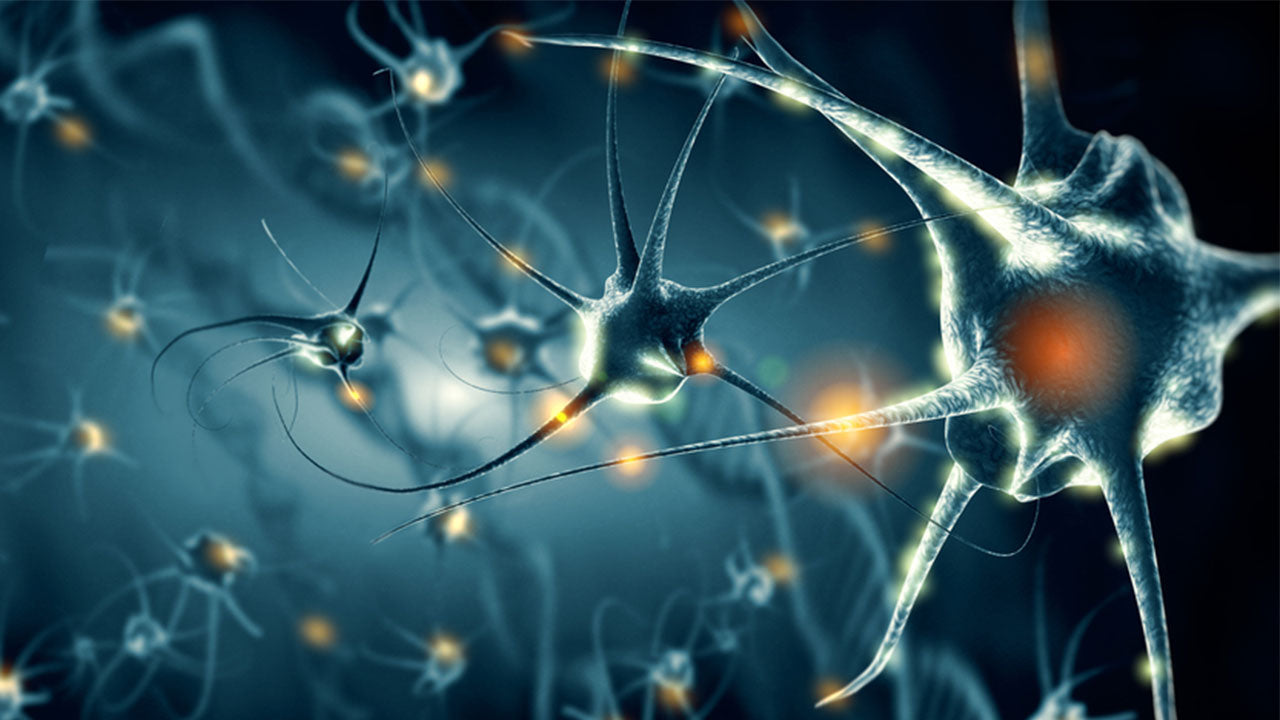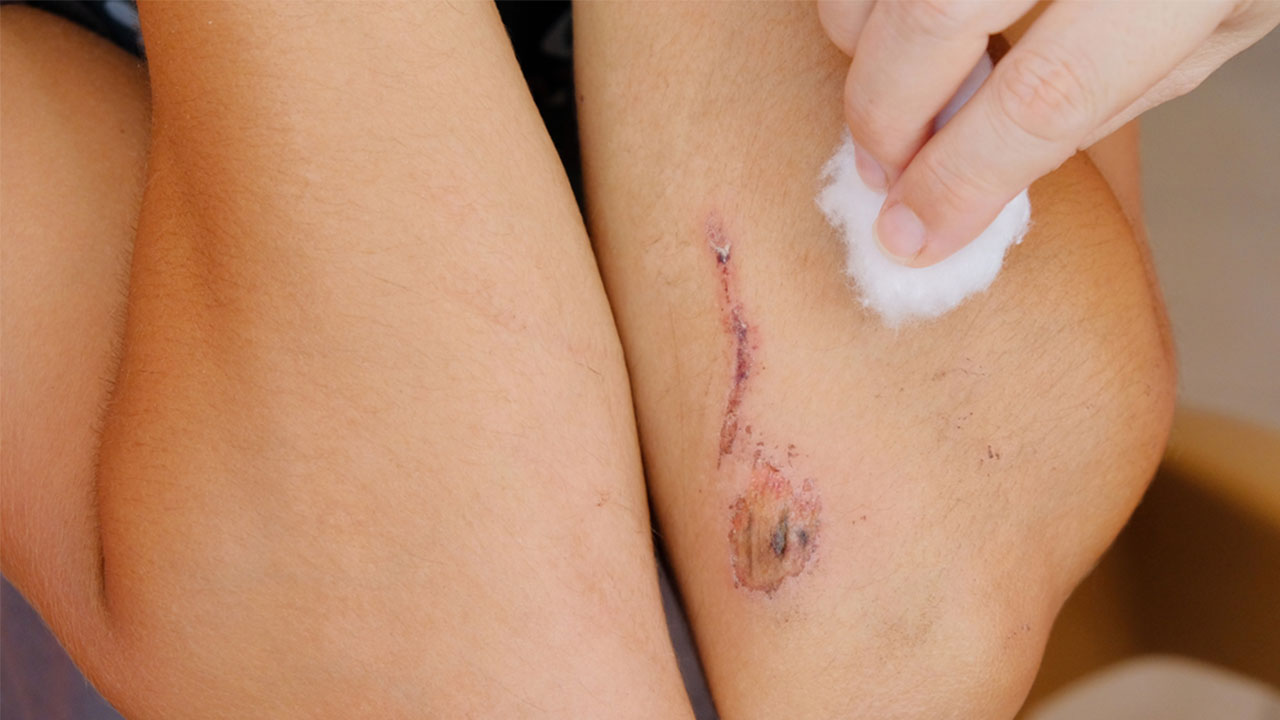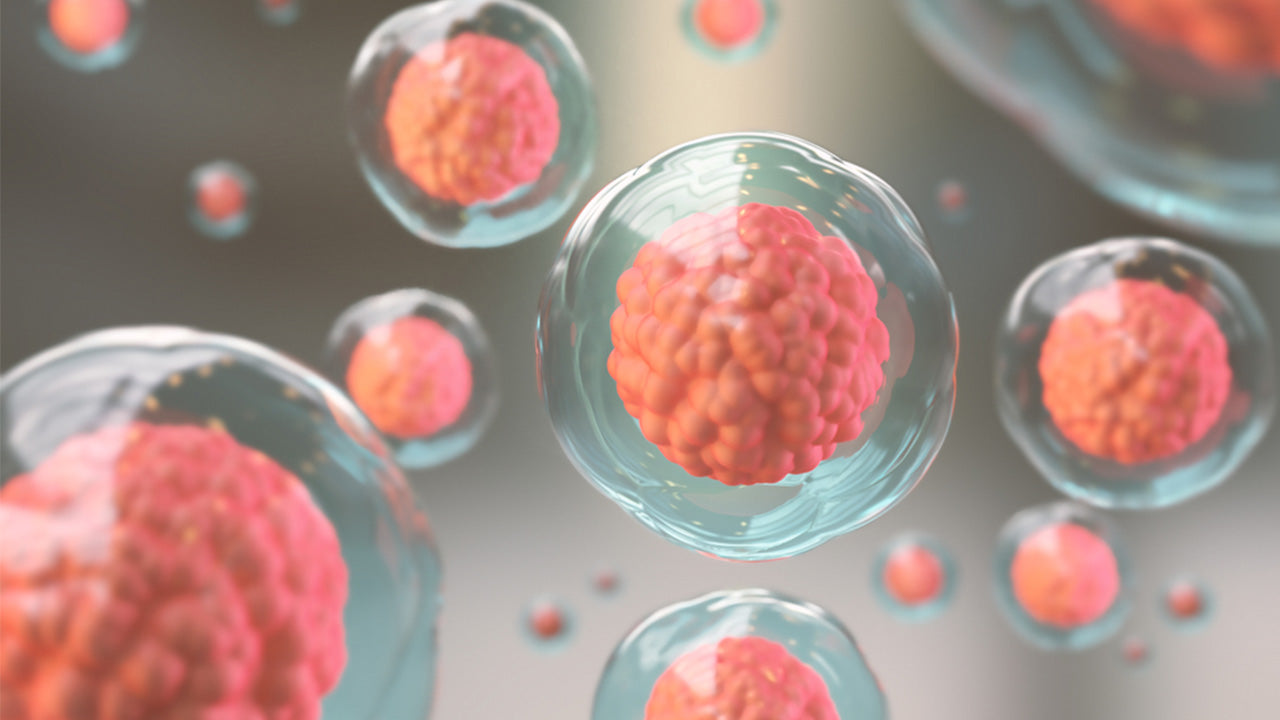Nerve Regeneration: Is It Possible to Reverse the Effects of Nerve Damage?
 By: by Amino Science
By: by Amino Science

With an estimated 20 million Americans suffering from peripheral nerve damage and millions more dealing with spinal cord injuries, researchers are constantly looking for new ways to address the effects of nerve damage. And while we still have a long way to go, significant advancements have been made in the pursuit of nerve regeneration. In this article, we're going to take a closer look at these advancements and discuss the causes and symptoms of nerve damage and what you can do right now to help heal injured nerves.
Your Nervous System: The Basics
Although most of us probably think of the brain and spinal cord when we think of the body's nervous system, the truth is that the nervous system is made up of two separate but interrelated components:
- Central nervous system
- Peripheral nervous system
While the central nervous system is indeed the portion of the nervous system that includes the brain and spinal cord, the peripheral nervous system is the part of the nervous system that houses the nerves, which serve to communicate with both the central nervous system and each other.
The nervous system can be further subdivided into two other major components:
- Somatic nervous system
- Autonomic nervous system
The somatic nervous system is also known as the voluntary nervous system, while the autonomic nervous system is sometimes called the involuntary nervous system. Both are part of the peripheral nervous system.
The somatic nervous system carries sensory and motor information back and forth between the central nervous system and the nerves connected to the muscles, skin, and sensory organs.
As you might guess, the autonomic nervous system is responsible for regulating the functions of the body that are largely outside conscious control, including things like heart rate, digestion, and respiratory rate.

The Anatomy of a Nerve
The nerves themselves are made up of two basic cell types:
- Nerve cells (neurons)
- Glial cells
Nerve Cells
Neurons are the parts of nerves responsible for transmitting and receiving electrical impulses. They're also similar to other cells in that they have a cell membrane, nucleus, cytoplasm, and organelles. However, neurons have two things other cells in the body don't:
- Dendrites
- Axons
It's the responsibility of the dendrites to transmit electrical impulses to the spherical part of the neuron that holds the nucleus—the cell body. By contrast, the axons are responsible for transmitting information away from the cell body, to other neurons.
There are also three basic neuron types:
- Sensory neurons (afferent)
- Motor neurons (efferent)
- Interneurons
While sensory neurons are responsible for transmitting nerve impulses from the sense organs to the central nervous system, motor neurons are responsible for sending impulses from the central nervous system to the glands and muscles. And interneurons have the honor of transmitting information between sensory and motor neurons.
Fun Fact: Millions of years ago a virus inserted its genetic code into the genome of four-legged animals and rewrote how neurons communicate. It's now thought that this ancient virus may be responsible for the rise of human consciousness.
Glial Cells
Glial cells surround the neurons and make it possible for them to do everything they do. Not only do glial cells provide physical support to neurons and protect them against infection, but they also ensure that they receive beneficial nutrients by connecting them to blood vessels.
There are several different types of glial cells, each with its own specific action, but one of the most important is the Schwann cell, which is commonly found in the axons of peripheral nerve fibers.
It's the Schwann cells that are responsible for forming the myelin sheath—the insulating fatty acid layer that protects and insulates the nerve fiber and helps speed up the transmission of nerve signals. The Schwann cells also form another layer that's known as the neurilemma.
Found only in the peripheral nerves, the neurilemma covers both the myelin sheath and the gaps in the sheath where the axon is exposed (nodes of Ranvier), thus providing an added layer of protection.
Interestingly, the neurilemma is also known to play an important role in peripheral nerve repair.
When a peripheral nerve is damaged, the neurilemma forms a tube through which axonal regeneration can occur. This process takes place as long as the neurilemma and cell body remain intact.
Unfortunately, the myelin sheaths of the central nervous system arise from completely different types of glial cells—oligodendrocytes—which means nerve fibers aren't protected by a neurilemma and thus don't possess the same regenerative powers.
This is why spinal cord injuries can be so devastating and why there's much greater hope for functional recovery after a peripheral nerve injury.

What Causes Nerve Damage?
It's estimated that the human body contains over 100 billion nerves. With a figure that large, it's not surprising that things can go wrong and nerves can become damaged.
But what causes nerve damage?
There are a number of determinants that can cause nerve injuries:
- Compression: Pressure from surrounding structures can squeeze and irritate nerves. Nerve fibers can also undergo traumatic compression as a result of a crush injury.
- Severing: Nerves can be cut during surgery or a traumatic event.
- Stretching: Some traumatic events can stretch a nerve to the point where it becomes injured.
- Burns: Severe burns can damage nerve fibers.
- Disease: Autoimmune diseases, cancer, diabetes, and HIV can all cause damage to nerve fibers.
- Toxins: Heavy metals and even some medications can damage nerve fibers.
- Malnutrition: Deficiencies of certain vitamins and minerals, including vitamin B12 and copper, can lead to nerve damage.
Symptoms of Nerve Damage
With over 100 billion nerves, each involved in the proper functioning of different parts of the body, it should come as no surprise that a variety of symptoms may present themselves after a nerve injury. However, the type of symptoms seen will depend on the nerve involved and where it's located.
For example, damage to an autonomic nerve may result in the following symptoms:
- Dizziness
- Incontinence
- Erectile dysfunction
- Difficulty swallowing
- Problems digesting food
- Sluggish pupils
- Problems regulating body temperature
- Exercise intolerance
- Inability to sense pain
Damage involving a motor nerve may produce symptoms indicative of problems with motor function, including:
- Weakness
- Muscle atrophy
- Paralysis
- Cramps
- Fasciculations (twitching)
Nerve damage resulting from injury to a sensory nerve can produce the following symptoms:
- Burning
- Tingling
- Numbness
- Sensitivity

Nerve Regeneration: Is It Possible?
As mentioned earlier, the peripheral nerves are surrounded by a neurilemma that enhances peripheral nerve regeneration after an injury.
But how exactly does nerve growth occur?
In a study published in the journal Cell, researchers noted that the axonal growth capabilities of the peripheral nervous system are so remarkable that the nerve stumps of cut nerves can actually reconnect themselves and begin functioning again.
They also noted that Schwann cells remain relatively quiet until an injury occurs and then revert back to a state similar to stem cells and, with the help of fibroblasts, go to work at the injury site, regenerating axons in the denervated area.
Similarly, a review published in the International Review of Neurobiology noted that, while axon regeneration and reinnervation do occur in the peripheral nervous system, functional recovery is frequently poor after severe injury.
However, if Schwann cells are switched to a stem cell–like state, growth factors such as brain-derived neurotrophic factor (BDNF) are secreted, and if the proteins that make up the extracellular matrix are present at the nerve stump, regrowth of axons is enhanced.
These studies offer fascinating insights into the mechanisms of nerve regrowth in the peripheral nervous system—plus tantalizing clues regarding how best to support nerve regeneration.
But equally exciting are recent studies that have taken these findings and applied them to the study of potentially new methods of approaching spinal cord injuries.
In one of the most compelling examples, scientists used an animal model to determine the underlying biological mechanisms necessary for the regeneration of nerve fibers after a complete spinal cord injury.
Using a variety of growth factors, researchers were able to turn on the genetic program that encouraged axonal growth, establish an environment conducive to growth, and program the path along which growth was to occur.
Although this study marks the first of its kind, the results were so impressive that a small study involving patients with spinal cord injuries is now being conducted.
6 Ways to Help Heal Injured Nerves
While new breakthroughs in the treatment of spinal cord injuries may be much closer than they once were, we're still living in an age in which peripheral nerve injuries are much easier to address.
In fact, there are a number of techniques that can encourage neural regeneration and functional recovery.
1. Surgery
Nerve injuries that are the result of compression can often be corrected with surgical repair. For example, in severe cases, surgical decompression can be used to take the pressure off the ulnar or median nerve.
Likewise, cases of nerve transection can be corrected by splicing the cut nerve ends or by using a nerve graft.
Interestingly, a severed nerve tends to heal more quickly than a nerve that's been damaged by compression, but in both cases, healing should take place within a period of about 4 to 12 weeks.
2. Exercise
As you might imagine based on our earlier discussion of glial cells, exercise is one of the best ways to encourage nerve regeneration. Regular exercise not only stimulates the muscles affected by a nerve injury, but it also increases blood flow, which brings beneficial nutrients to the injury site.
While any activity that gets you up and moving can encourage nerve growth, nerve damage resulting from conditions like peripheral neuropathy can affect balance and coordination. Therefore, if you have any questions regarding potential safety issues, be sure to speak with a qualified health care professional before engaging in any exercise program.
3. Vitamins and Minerals
As mentioned, a number of vitamin and mineral deficiencies can lead to nerve damage.
- Vitamin B12: Deficiencies of this water-soluble vitamin are actually more common than you might think. In fact, it's estimated that the majority of adults over the age of 65 are vitamin B12 deficient. What's more, because vitamin B12 is found exclusively in animal-based foods, both vegetarians and vegans may be at risk of deficiency.
- Thiamine: Also known as vitamin B1, thiamine is an important part of healthy nerve function.
- Vitamin B6: Like thiamine, vitamin B6—also known as pyridoxine—is required by the nervous system for proper functioning.
- Vitamin E: A deficiency in this fat-soluble vitamin can lead to symptoms of peripheral neuropathy.
- Copper: Deficiencies in this important mineral are linked to peripheral nerve damage and diseases of the spinal cord.
Interestingly, while deficiencies of vitamin B6 and copper can cause nerve damage, an excess of either can be equally harmful. So if supplementing with these nutrients, be sure to stay within recommended intake guidelines.
4. Alpha-Lipoic Acid
Numerous studies have found that the antioxidant alpha-lipoic acid may be effective in delaying or even reversing diabetes-associated peripheral neuropathy.
A review published in the Review of Diabetic Studies noted that alpha-lipoic acid increases the production of glutathione—the body's master antioxidant—and helps reduce pain, abnormal sensations, and numbness.
5. Omega-3 Fatty Acids
We mentioned earlier that the myelin sheath that protects nerve cells is composed of fatty acids. So, as you might imagine, it's not surprising that omega-3 fatty acids have been found in studies to play a protective role against nerve damage.
For example, a study published in the Journal of Neuroscience noted that polyunsaturated fatty acids like omega-3s are essential components of the phospholipids that comprise the myelin sheath.
What's more, they exhibit both neuroprotective and neurotrophic properties, which researchers hypothesize could lead to positive effects on neural regeneration.
6. Amino Acids
Known as the building blocks of protein, amino acids are required for almost every biological process that takes place within the body.
Not only are amino acids—especially the nine essential amino acids, which we must obtain from the foods we eat—required for the creation and maintenance of muscle, but they're also necessary for the production of neurotransmitters and hormones.
Earlier we mentioned a study that found that switching on Schwann cells, secreting growth factors, and ensuring the presence of an extracellular matrix at the nerve stump can enhance nerve regeneration.
Interestingly, both the extracellular matrix and the growth factors are made up of proteins. Which means that the body must have a sufficient supply of amino acids to build both of these substances.
What's more, studies have found that two specific amino acids, acetyl-L-carnitine and N-acetylcysteine, may have a particularly important role to play in nerve health.
Both of these amino acids act as antioxidants, but acetyl-L-carnitine has been found to be effective in reducing neuropathic pain, while N-acetylcysteine has been shown to decrease pain and improve coordination.
A review published in the Journal of Pain Research noted that acetyl-L-carnitine has been found in clinical trials to be safe and effective for both neural regeneration and the improvement of nerve conduction parameters.
Similarly, a study published in the journal Laryngoscope Investigative Otolaryngology found that N-acetylcysteine was effective in facilitating facial nerve recovery following a crush injury.
There's no denying the fact that we still have a long way to go before we fully comprehend all the intricacies of the nervous system, but it's clear that the body has a tremendous ability to heal itself.
While some nerve injuries may still be beyond our ability to heal, science has shown us that there are many ways we can support our body's innate healing system.
If you're currently suffering from symptoms of nerve damage and have questions regarding any of the information discussed in this article, don't hesitate to seek further guidance from a qualified health care practitioner.

Up to 25% off Amino
Shop NowTAGS: injury
Join the Community
Comments (0)
Most Craveable Recipes




 833-264-6620
833-264-6620



















